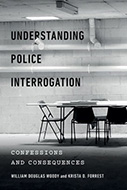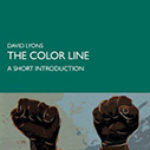Understanding Police Interrogation: Confessions And Consequences

Author: William Douglas Woody and Krista D. Forrest
Publisher: New York: New York University Press, 2020. 320p.
Reviewer: Kevin Cassidy | February 2021
The movie the French Connection was released in 1971, and today some law enforcement officers still use the line spoken by Detective Jimmy Doyle, portrayed by Gene Hackman, to confuse and disorient suspects. Doyle and his partner Buddy Russo run after a drug dealer in New York City, and upon catching him Doyle asks, “Did you ever pick your feet in Poughkeepsie?” Eddie Egan (portrayed as the Doyle character) and Sonny Grosso (portrayed as Russo) were actual New York City detectives who used this line of questioning to disorient suspects during an interrogation. Grosso would calmly ask the suspect direct questions about a case, and Egan would yell at the suspect if he ever picked his feet in Poughkeepsie. According to Egan and Grosso, this would confuse and unnerve the suspect. The suspect would rather answer Grosso’s questions about the crime of which they were suspected. Sometimes it worked and other times it didn’t.
In Understanding Police Interrogation, William Douglas Woody and Krista D. Forrest discuss this line of questioning as well as other methods used by law enforcement during the questioning of suspects. They analyze, explore and apply case studies discussing how police interrogations have changed over the years. For example, in chapter 2, they discuss how officers enter interrogation rooms with a pro-guilt bias and intimidate suspects by violating their personal space, interrupting them and shouting at them to obtain a confession.
Police interviews and interrogations have transformed over the years with techniques, questioning and consequences being the catalyst of police interrogations. The goal has moved closer toward obtaining a confession from the accused in a legal manner, although that does not happen in every case, as the authors make clear. These authors do an excellent job in outlining what is involved in today’s methods used by law enforcement agencies to question, urge, and sometimes coerce individuals into confessing. The book is not just about understanding the methods of police interrogation, but also about the criminal justice system, court proceedings and evidentiary law. Overall, the book is well written and well organized.
In the introduction, the authors discuss the three primary goals of the book. First, they hope to educate readers by discussing the processes of police interrogation and confession in the United States. Second, they address the growing field of research evaluating the impacts of confessions and other evidence. Third, they emphasize the totality of circumstances in individual cases. The latter can include relevant legal precedents and potential limitations of the defendant, such as cognitive disability, mental illness, or fatigue. The authors include an informative diagram showing how the ‘Totality of the Circumstances Approach to Understanding a Confession’ is managed and applied.
Often times, unfortunately, during an interrogation police may lie and make accusations that are not true. Woody and Forrest describe and discuss these, what they call deceptive interrogation tactics. The authors also delve into such topics as alternative questioning, the Behavior Analysis Interview (BAI), coerced confessions, context manipulation, false confessions, Miranda warnings, polygraphs and various other techniques used by law enforcement to obtain a confession. Throughout the book, case studies are discussed and analyzed. Two cases that are noteworthy and referenced are Bram v. United States (1897) and Miranda v. Arizona (1966). In the Bram case, the United States Supreme Court placed early limits on police deception and tactics. In Miranda, the Supreme Court decided that the Fifth Amendment to the Constitution required that law enforcement officials advise suspects of their right to remain silent and to obtain an attorney during interrogations while in police custody.
The authors overall underlying theme is the fairness and unfairness of the criminal justice system, and professionals in law enforcement as well as students in the field of police science, criminal justice or forensics, will benefit greatly from this book.
Reviewer: Kevin Cassidy-Professor in the Security, Fire & Emergency Management Department at John Jay College. He also lectures at Slippery Rock University in Pennsylvania. He is a member of ASIS.


